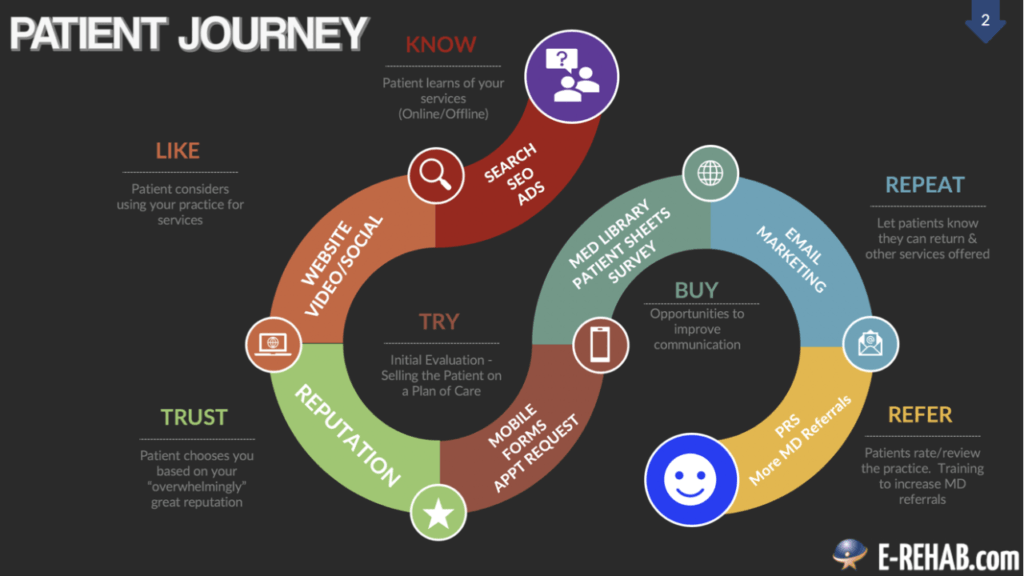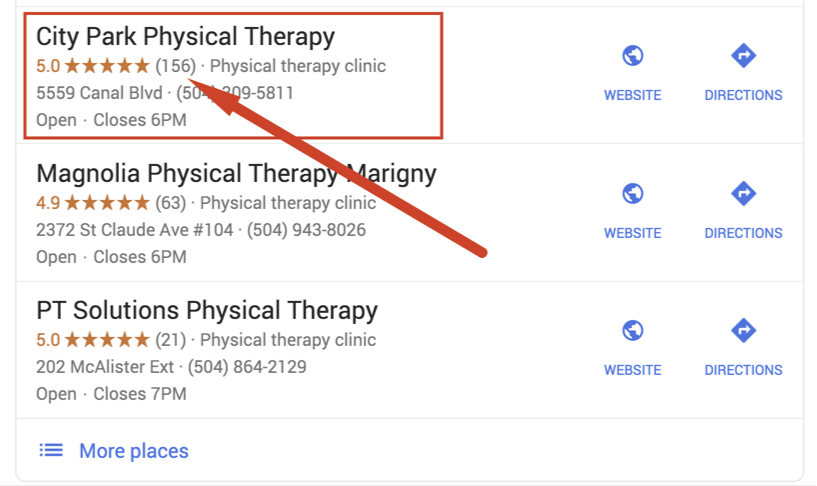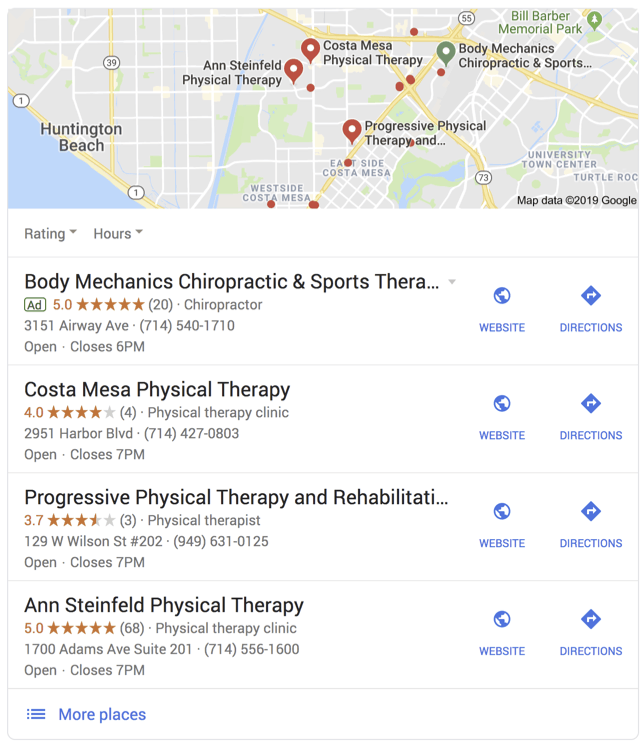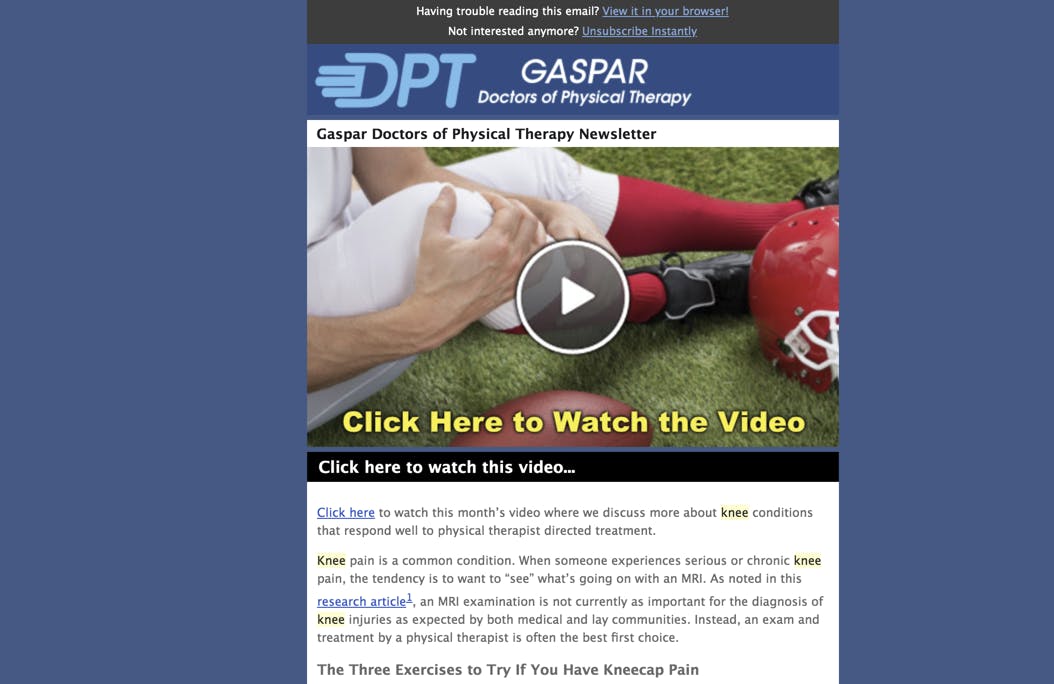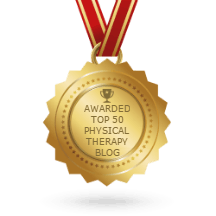One of the most common challenges that private physical therapy practice owners face is something that’s seen across all businesses:
How do you set yourself apart from everyone else?
Unless your clinic is in an extreme rural part of the country, you probably have to compete with a number of other practices in the area, many of which have claims about why the patient should choose them. Example claims are typically as follows:
- We’re the best,
- Best in the city,
- 1 on 1,
- Hands-on,
- Experienced,
- Top-rated.
So how can you show prospective patients that they’re better offer choosing you than the competition for their care? It’s all about communicating your message and having a well-designed reputation marketing plan.
Here are 4 big ideas that will elevate your practice above your competitors:
I. Create clear distinction
One of the foundations of your physical therapy marketing strategy should be to determine how you will create distinction between your private physical therapy practice and all the other practices in your region. Distinction is all about standing out from the crowd and presenting yourself as better than average so that patients will choose you. Scott McKain, who is a global expert in the art of distinction, breaks this method down into the 4 Cs:
- Clarity: before you even work on delivering your message, you first need to define who you are as a business, what your practice is all about, and perhaps just as importantly, what your practice is not about; this step is crucial, because it is extremely difficult to differentiate your practice unless you know how you want to represent it.
- Creativity: research has shown that in the best marketing strategies, this step follows clarity, and not the other way around; some may find this to be counterintuitive, but the truth is that while being creative is absolutely necessary, it needs to be guided by the clear definition of your business.
- Communicate: using a creative approach, you next need to figure out a way to clearly and effectively communicate the message you’ve landed on to current and prospective patients, and do so on a consistent basis; one way to accomplish this is by providing success stories of patients that have had a positive outcome from treatment.
- Customer-experience focus: this means planning every business decision around the patient experience, listening to their feedback, and responding in such a way that shows them their interests are your top priority.
II. Write an attractive value proposition
Along with the formula to creating distinction, another essential component how you should position yourself amongst your competitors, should be your value proposition. Proposing your value means articulating to prospective patients why you can solve their problems more effectively than other practices in the area. It shows patients what specific benefits they can expect if they see you for treatment and the value of your services that you’re guaranteeing. When created and delivered properly, this can be the ingredient that will give you a clear competitive advantage over others.
Below are a few key elements of a good physical therapy private practice value proposition and some tips on how you can create one for your practice:
- It should contain a headline, sub-headline or paragraph, and possibly a few bullet points or a visual element
- Start by making a list of all benefits your patients will experience, then identify what value your services will bring to them, and finally differentiate and position yourself to make it clear who your target patient is, what you offer them, and how you’re different
- Your proposition should be easy to understand, clearly communicate the benefits patients will get, and show how you’re better than competitors; it should also take 5 seconds or less to read and understood your value proposition
- You should also focus on highlighting the countless benefits and advantages of physical therapy over other treatments, showing that it is an effective first-line intervention supported by research for a wide range of conditions with little to no side effects; it is also easily accessible, saves patients money, and will help them avoid additional specialist visits, diagnostic tests, opioids, and unnecessary surgeries
III. Bring what makes your practice unique front and center
This next one is more than just saying your are the best. It can set you apart when done right, but won’t necessarily result in a long-term competitive advantage (because your competition could replicate it).
As with the other strategies mentioned above, the goal is to show why a patient should choose your practice over your competitors, and one of the most powerful ways to do this is by clearly showing them what makes you unique.
In order to do this, first do a detailed review of all the other private physical therapy practices in your region, taking stock of what services they offer, what advantages they claim to provide, and what some are missing. From there, take a close look at your own practice and work to identify some of the prime characteristics, qualities, and services that aren’t found elsewhere. Some examples of services or traits that might set you apart are:
- Having hours of operation that are more extensive than other practices
- Accepting more insurance types than other practices
- Having several locations to better serve patients
- Providing treatment services that are not typical, such as aquatic therapy, laser therapy, or certain techniques like the McKenzie method, the Active Release technique, myofascial release, or ASTYM
- Having a policy that ensures physical therapists—rather than aides or assistants—spend a certain amount of time with each patient
An Example of a Private Practice “Positioning” Themself Against Corporate and Hospital PT Care with a Comparison Table
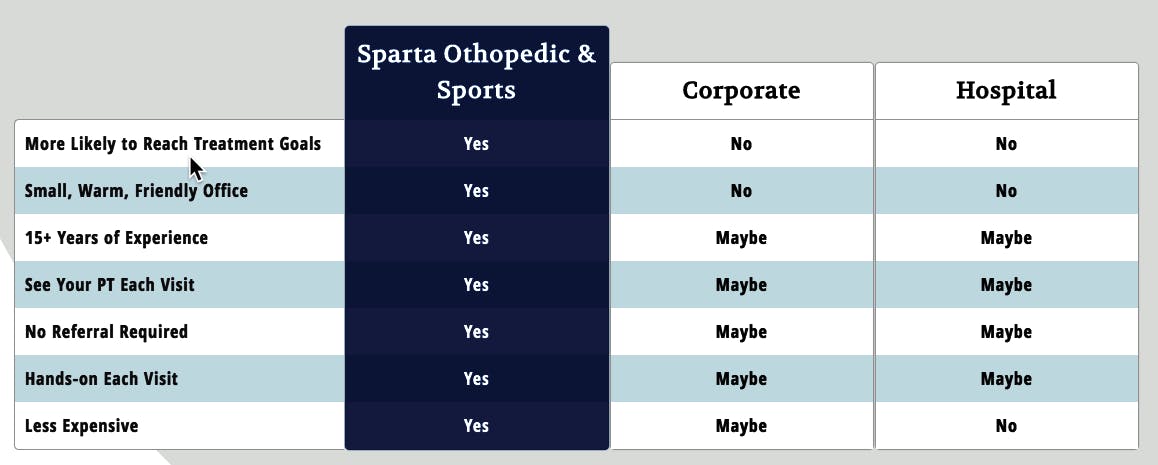
IV. Use the right language…especially on your website
The final step is to make sure that you’re using the clearest and most effective language when creating content. Without the right language, you could have the right idea of what you want to say, but are not saying it in a way that engages readers and drives them to your clinic. Consider website visitors as an example. It usually only take about three seconds after landing on your page to decide if they want to continue looking or not, so you definitely want to make a positive first impression (a good image will do that for you) that keeps them there. Next, they will start reading, so you need to use the right language.
One method to determine if you’re using the right language is to think about the following three questions that visitors are asking when visiting your website:
- 1) What do you offer?
- 2) How will it help me recover?
- 3) How do access your services?
If the answers to all three questions are clearly visible on your website above the fold (the bottom of their computer or phone screen), you’ll be increasing your chances of getting that visitor to read on and hopefully turning them into a new patient. So it’s best to consider them when creating any type of content for your practice.
A Quick Glance at this Website and You Can See that They are Physical Therapists, Have 3 Clinic Locations, and They Help their viewers “…Get Back In The Game”
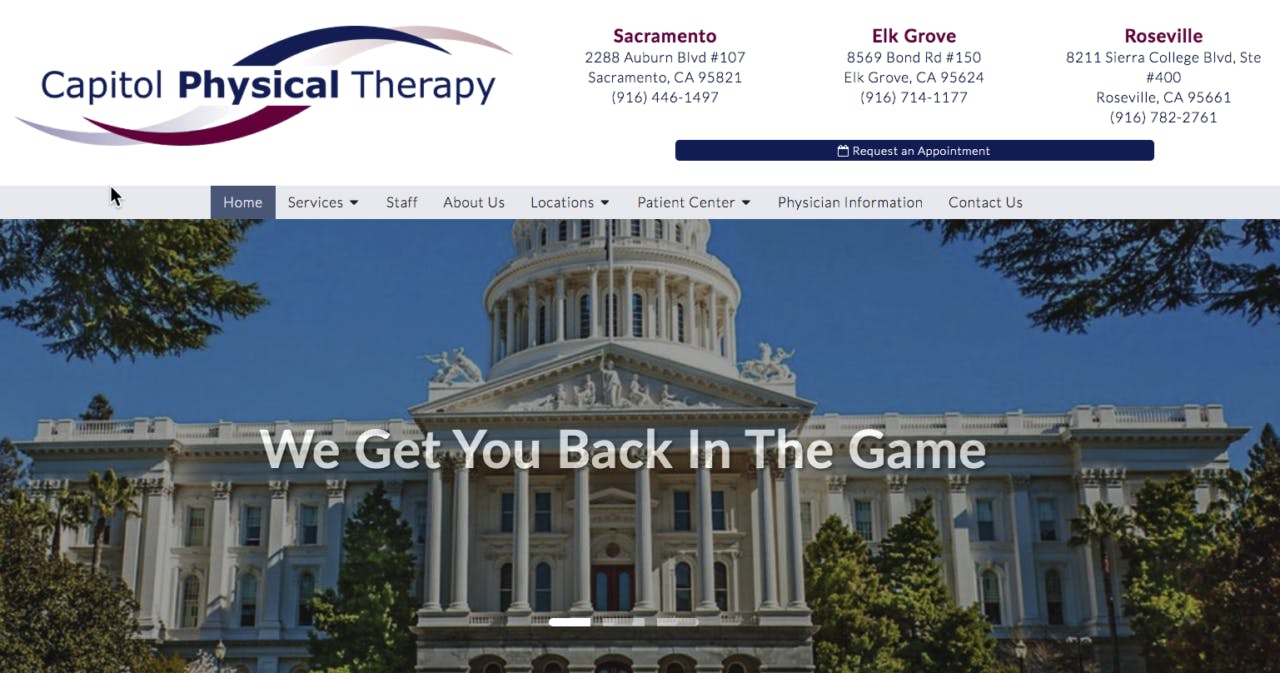
Additional reading: If you want to get clear on your message, one good reference is Building a StoryBrand: Clarify Your Message So Customers Will Listen.
StoryBrand’s tagline makes it very clear how they help business owners to brand and position themselves:
Their tagline is: If you confuse you’ll lose. Noise is the enemy and creating a clear message is the best way to grow your business.

